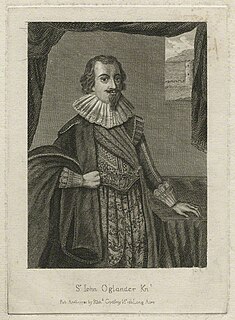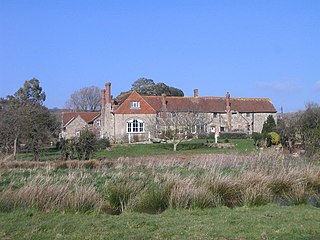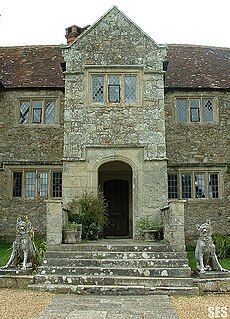| Briddlesford Manor | |
|---|---|
| Former names | Bridlesford |
| Alternative names | Breilesford |
| General information | |
| Type | Manor house |
| Location | Isle of Wight |
| Country | United Kingdom |
Briddlesford Manor (also Breilesford, Bridlesford, Britilsford), is a manor house on the Isle of Wight, situated in the parish of Arreton.

The Isle of Wight is a county and the largest and second-most populous island in England. It is in the English Channel, between 2 and 5 miles off the coast of Hampshire, separated by the Solent. The island has resorts that have been holiday destinations since Victorian times, and is known for its mild climate, coastal scenery, and verdant landscape of fields, downland and chines.

Arreton is a village and civil parish in the central eastern part of the Isle of Wight, England. It is about 3 miles south east of Newport.
It lies in the low ground to the north of the down at the northern end of the parish. Before the Conquest it had been held by Unlof of King Edward, but in 1086 it was in the possession of William son of Azor (landowner), being in the tenancy of Nigel. The overlordship followed the same descent as Yaverland until 1331–2, and after that time the manor was held of the honour of Carisbrooke Castle. [1]
Azor was one of the most powerful English landowners at the time of Edward the Confessor in the 11th century. He was a kinsman and chamberlain of Brihtheah, a bishop of Worcester and a former abbot of Pershore. He owned property from Lincolnshire down to the Isle of Wight in many counties and like another great landowner of the times, Toki, he also owned urban property in addition to his vast possession of lavish country estates. He is mentioned in the Domesday Book and appears in countless histories of English counties along with his sons, Goscelin, William, and Henry who inherited his estates after his death. The sons in particular are linked with the early histories of many of the major manor houses on the Isle of Wight.

Carisbrooke Castle is a historic motte-and-bailey castle located in the village of Carisbrooke, Isle of Wight, England. Charles I was imprisoned at the castle in the months prior to his trial.
The manor lapsed to the overlord Thomas de Aula in 1204 on account of the felony of William de Briddlesford, the tenant. It had evidently formerly belonged to the family of de Parco, for Walter de Parco granted land in the manor to the abbey of Quarr and Thomas de Aula confirmed to the abbey the land in Briddlesford which William de Parco had given. [1] Towards the end of the 13th century it was held by the Lisles of Wootton, and it has since followed the same descent as Wootton. As of 1912 it was in the possession of Col. Stephenson Clarke. [1]

Quarr Abbey is a monastery between the villages of Binstead and Fishbourne on the Isle of Wight in southern England. The name is pronounced as "Kwor". It belongs to the Catholic Order of St Benedict.

Wootton is a large village, civil parish and electoral ward with about 3,000 residents on the Isle of Wight, first recorded around the year 1086.
In the reign of Elizabeth Thomas Lisle, second son of Thomas Lisle of Wootton, went to live at Briddlesford, and, Sir John Oglander says, built the house. [1]

Sir John Oglander was an English politician who sat in the House of Commons from 1625 to 1629. He is now remembered as a diarist.




